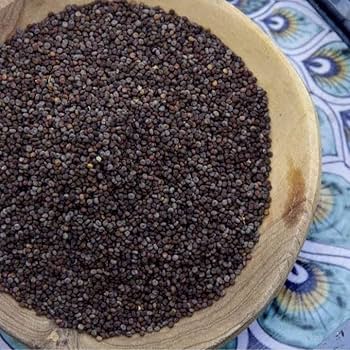India’s diverse culinary landscape is rich with secret ingredients that add magic to every dish. One such hidden gem is Jakhiya, a tiny seed native to the hills of Uttarakhand and Himachal Pradesh. Known for its distinctive crackling sound and crunchy texture, Jakhiya seeds are an integral part of traditional Pahadi cooking and are slowly making their way into gourmet kitchens across the country.
But what exactly is jakhiya, and why is it gaining popularity in kitchens and wellness circles? Let’s dive into the world of this wild Himalayan herb.
What is Jakhiya?
Jakhiya, also known as wild mustard or Cleome viscosa, is a spice seed derived from a plant found primarily in the foothills of the Himalayas. When added to hot oil, jakhiya seeds crackle and burst, releasing a distinct aroma and nutty taste.
Used primarily in tempering (tadka) for lentils, curries, and stir-fried vegetables, jakhiya brings a crispy texture and rustic depth to Pahadi dishes that cannot be replicated with common spices like cumin or mustard.
Jakhiya in Hindi
In Hindi, jakhiya is often called “जाखिया” and is widely used in the Garhwali and Kumaoni cuisines of Uttarakhand. It holds not only culinary but also cultural and medicinal significance in local traditions.
For those wondering, “what is jakhiya in Hindi?” or “jakhiya kya hota hai?“, it is a native seasoning seed used to give tadka a crunchy finish, commonly replacing rai or jeera in many Himalayan kitchens.
Jakhiya Seeds in English
In English, Jakhiya seeds are referred to as wild mustard seeds or more precisely Cleome viscosa seeds. These seeds are dark brown or black, small, round, and slightly sticky when raw.
Unlike mustard seeds that release oil when crushed, jakhiya remains whole even when roasted, giving food a texture-enhancing crispness.
The Jakhiya Plant – A Medicinal Herb
The Jakhiya plant, botanically known as Cleome viscosa, is a wild herb that thrives in dry, arid conditions, commonly found in terraced fields and wastelands in the hilly regions of North India.
Apart from its culinary use, it has several Ayurvedic properties:
-
Anti-inflammatory
-
Antibacterial
-
Digestive aid
-
Wound-healing properties
Traditionally, jakhiya leaves and paste from its seeds are used to treat skin ailments and inflammation.
How to Use Jakhiya in Cooking
Using jakhiya seeds is simple and similar to cumin or mustard. Here’s how:
-
Heat oil or ghee in a pan.
-
Add 1/2 tsp of jakhiya to hot oil.
-
Let it crackle for a few seconds.
-
Add chopped vegetables, lentils, or rice.
-
Cook as usual.
Popular dishes using jakhiya:
-
Jakhiya aloo (potato fry)
-
Pahadi dal tadka
-
Jakhiya tempered khichdi
-
Saag bhaji with jakhiya
-
Kumaoni-style curries
The seeds add a unique crunch and smoky flavor, giving a real “Pahadi touch” to everyday recipes.
Health Benefits of Jakhiya
Beyond taste, jakhiya offers numerous health benefits:
1. Improves Digestion
Jakhiya acts as a carminative, helping in relieving bloating, acidity, and indigestion.
2. Rich in Antioxidants
The plant contains essential oils and antioxidants that combat inflammation and cellular damage.
3. Antibacterial Properties
Jakhiya seeds have shown effectiveness against bacterial infections, supporting immune health.
4. Promotes Skin Healing
Jakhiya paste is traditionally applied on wounds, boils, and insect bites in villages due to its natural healing properties.
Jakhiya vs Sabja Seeds – Are They Same?
Many confuse jakhiya with sabja (basil) seeds, but they are completely different:
| Feature | Jakhiya | Sabja (Basil Seeds) |
|---|---|---|
| Botanical Name | Cleome viscosa | Ocimum basilicum |
| Culinary Role | Used for tempering | Used in drinks/desserts |
| Appearance | Dark brown, rough | Black, smooth, tear-drop shaped |
| Flavor | Nutty, earthy, smoky | Bland, gelatinous when soaked |
| Use in Cooking | Roasted in hot oil | Soaked in water |
So no, jakhiya and sabja seeds are not the same.
Jakhiya in Uttarakhand Cuisine
In the hills of Uttarakhand, especially Garhwal and Almora, jakhiya is irreplaceable. It is found in nearly every household and is used in everything from basic tadka to ceremonial cooking. Its popping sound in the pan is often associated with warmth, homeliness, and the aroma of the hills.
Fun fact: In many Garhwali households, guests are offered dal tempered with jakhiya, a subtle way to show care and tradition.
Sustainable Harvesting of Jakhiya
Jakhiya is often wild-harvested, meaning it is collected from naturally growing plants instead of commercial farming. This not only keeps the soil health intact but also encourages sustainable use of native herbs.
At Laluri.com, we work with local Pahadi women and small-scale farmers to collect, clean, and pack pure jakhiya seeds without additives or preservatives.
Where to Buy Jakhiya Online?
You might not find jakhiya seeds in regular supermarkets, but you can order authentic, wild-collected jakhiya from the mountains directly at Laluri.com.
Why Buy from Laluri?
-
Sourced from Himalayan villages
-
Naturally harvested, sun-dried
-
No preservatives or artificial flavors
-
Packed sustainably
-
Support local hill communities
Whether you’re a chef exploring new flavors or a health-conscious foodie, jakhiya is a spice that will transform your meals and support local ecosystems.
Final Thoughts
Jakhiya may be small in size, but it carries the rich culinary and cultural essence of the Himalayas. From its crackling aroma to digestive benefits, it’s a spice that deserves a spot in every Indian kitchen.
If you’re looking to add authenticity and crunch to your food or simply explore the magic of Himalayan ingredients, Jakhiya is your answer.
🌿 In conclusion, you can buy pure, wild-harvested Jakhiya seeds at Laluri.com – Your One Stop Pahaadi Store.
